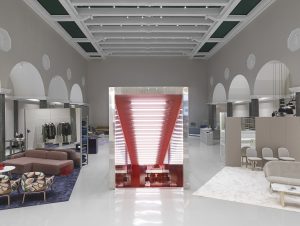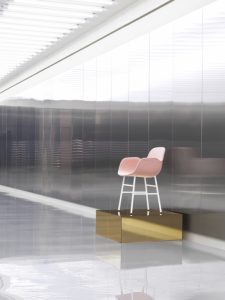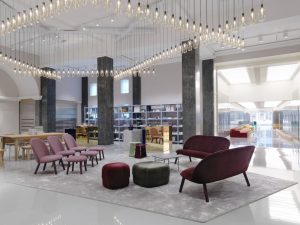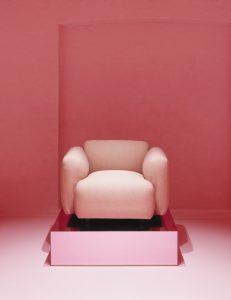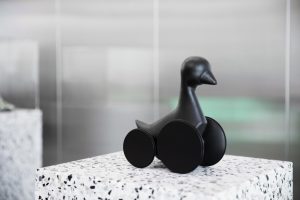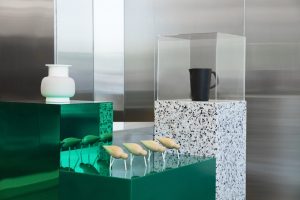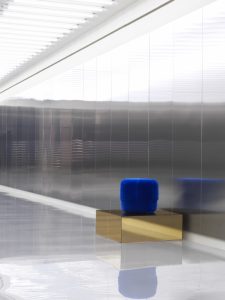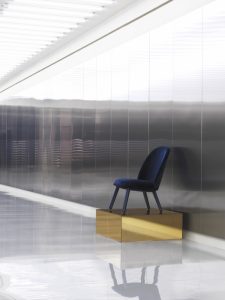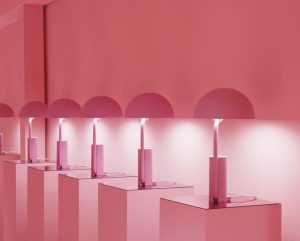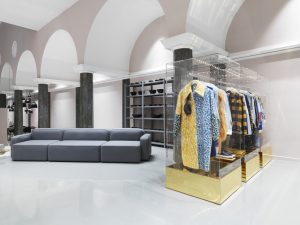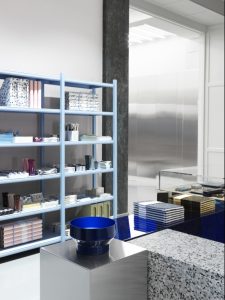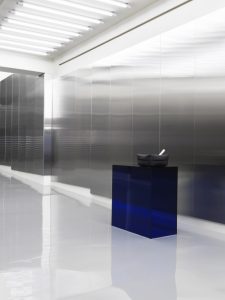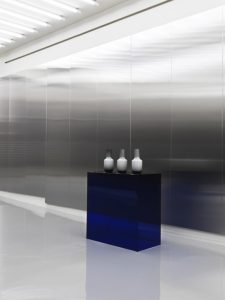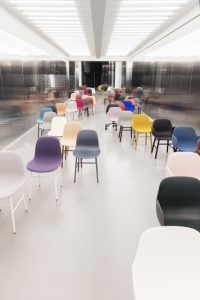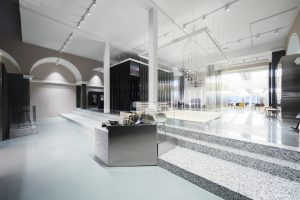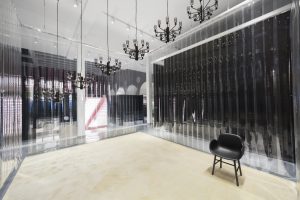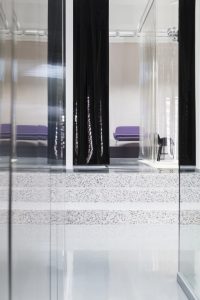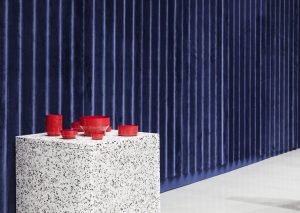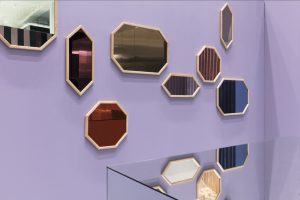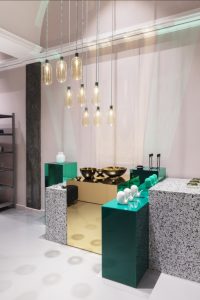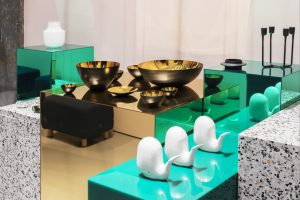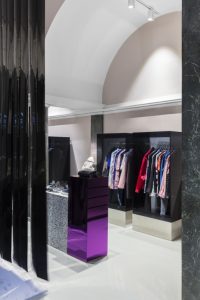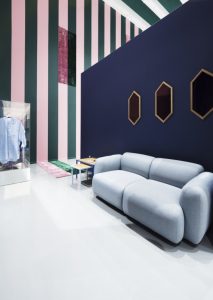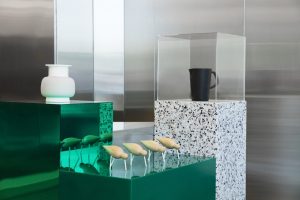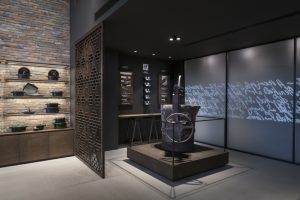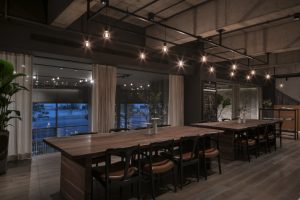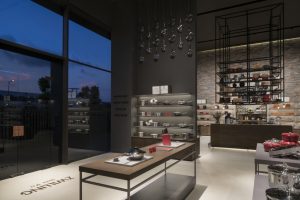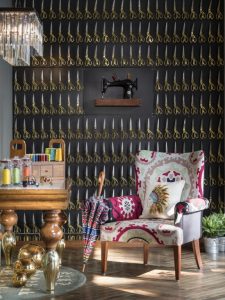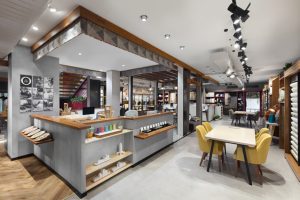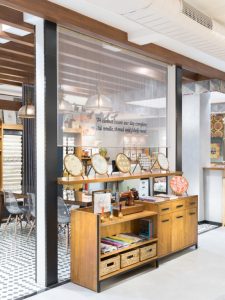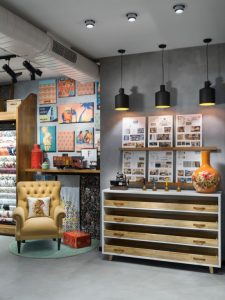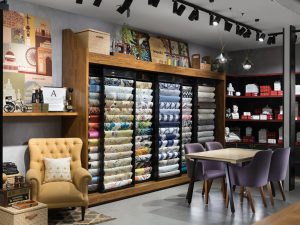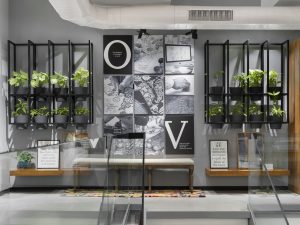While the household goods and furnishings sector has not been immune to the uptick in online sales compared to that of brick-and-mortar stores, it has adopted some noteworthy strategies to drive traffic and sales (both online and in store) with physical locations. The following retailers are embracing the power of online engagement and the practicality of tangible storefronts to shape a complete brand experience.
THE ART OF DESIGN
This past fall, Copenhagen, Denmark-based Normann Copenhagen peeled away the puzzling pink foil that had covered its store windows for more than a month to reveal a newly renovated, conceptual flagship/showroom with a lively color and material palette. Imagined by the brand’s in-house designer Hans Hornemann, the space is meant to feel more like an art exhibition than a store.
“The goal was to present a bold design concept that captures the essence of the Normann Copenhagen brand and creates a platform where we can explore new and untraditional ways of staging design,” says the company’s brand manager, Britt Bonnesen. “The theatrical universe we’ve created … is carefully curated and nothing is left to chance.”
Normann Copenhagen, Copenhagen, Denmark / Photography: Jeppe Sorensen, Copenhagen, Denmark
A major trend in home goods, which has also been apparent in other sectors, is the move away from the typical store format. “We see less traditional product shelves and more conceptual and sensuous environments,” notes Bonnesen.
Advertisement
In the showroom, customers become immersed in a Scandinavian design haven where they’re free to engage with the environment without cluttered p-o-p displays or promotional signage. Shop assistants are available to introduce product options or answer questions as needed and can help customers complete purchases using the store’s mobile checkout feature.
RETAIL RACONTEURS
Several years after designers Matteo Thun and Antonio Rodriguez (Milan) began drafting cutlery for renowned kitchenware brand Zwilling J.A. Henckels (Solingen, Germany), the duo was enlisted to envision the company’s first Shanghai factory store interior. Armed with brand familiarity (after designing several of its international boutique locations), Thun and Rodriguez created a concept firmly rooted in brand heritage and product education.
Zwilling J.A. Henkels Factory Store, Shanghai / Photography: Derryck Menere, Shanghai
Founded in 1731, it was important to the knife manufacturer to position itself as a longtime leader in the space and exhibit the quality and craftsmanship of each of its products. The nearly 5000-square-foot store features a heritage gallery, including historical photos of the company’s original factory and graphics detailing the intensive processes involved in creating its full range of kitchen tools, knives and flatware.
The store dedicates a significant portion of its floorplan to not just telling, but showing: To give its gourmand shoppers hands-on access to products in a real-life application, the upstairs houses a cooking school and dining area where they can learn new culinary techniques from chefs. “Cooking is about communication and conviviality; the cooking school is a space to come together, to prepare the food and share,” explains Antonio Rodriguez, partner, co-owner, Matteo Thun and Antonio Rodriguez (MTD-R). “Consumers want to experience the different products in an atmosphere that reflects the heart of the brand.”
Advertisement
INSPIRATION STATION
Delhi, India’s Tulips takes experiential one step further in its store with its carefully staged, curated vignettes, offering home decor inspiration in spades. The space, designed by Four Dimensions Retail Design Pvt. Ltd. (Bengaluru, India), prides itself on being an aspirational locale for customers who are redecorating their homes, as well as for designers working with clients seeking custom-made furniture pieces.
Rather than offering a purely transactional environment, Tulips is centered around consultative collaboration, with four zones in the store to ease the design process: The Brand Story zone immerses guests in the company’s history; Craft Stories displays imaginative applications of the brand’s offerings; Design Palette showcases its exclusive materials, swatches and fittings; and Design Collaboration is where the store’s in-house designers assist with customizations.
Tulips, Delhi, India / Photography: Deepak Aggarwal, Delhi, India
“This segment of customization is about higher emotional involvements and investments by customers and, hence, demands a lot of physical touch and discussion for making informed decisions,” says Nagaraja R, director design, Four Dimensions, explaining that this is a major differentiator from online retail for most home goods stores, while the more “familiar, low-involvement” products will continue to sell online.
He adds, “Online home stores in India have set up brick-and-mortar ‘experience centers,’ which seems to indicate a mandatory necessity of physical presence in this segment.”
Advertisement
BRINGING IT HOME
As consumers shift many of their purchases to online storefronts, home goods retailers are relying on their brick-and-mortar locations to cement a holistic relationship with shoppers. “Stores should offer you something extra, they should facilitate experiences and inspire,” says Bonnesen. In addition, Sohini Dey, associate and sr. team lead, Four Dimensions, explains that stores with high-level customer service, customization and curation, presented in ways in which online stores cannot, will continue to pull in customers.


 Photo Gallery3 days ago
Photo Gallery3 days ago
 Headlines2 weeks ago
Headlines2 weeks ago
 Sector Spotlight2 weeks ago
Sector Spotlight2 weeks ago
 Headlines1 week ago
Headlines1 week ago
 Headlines5 days ago
Headlines5 days ago
 Headlines2 weeks ago
Headlines2 weeks ago
 Designer Dozen1 week ago
Designer Dozen1 week ago
 Headlines3 days ago
Headlines3 days ago

